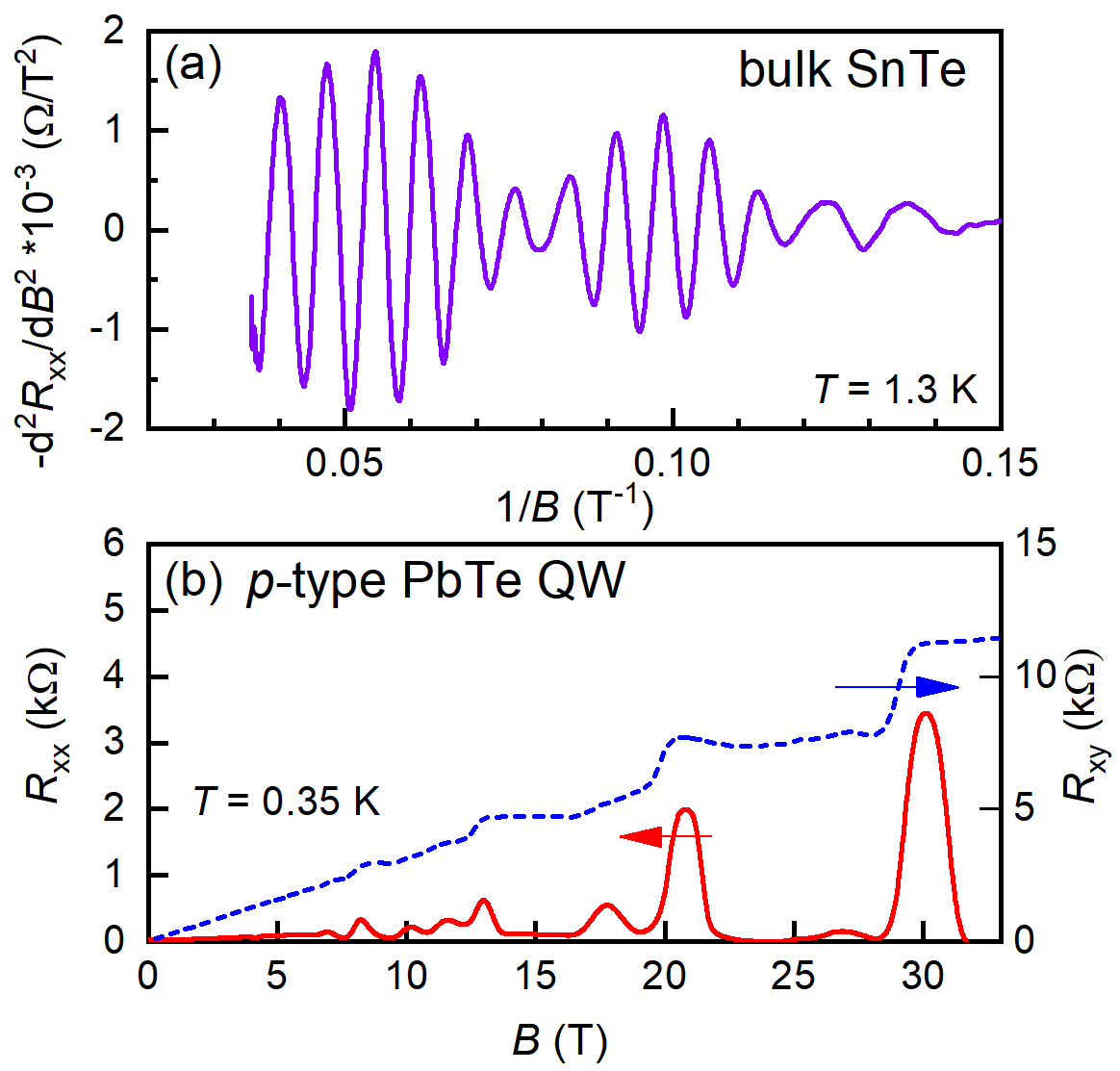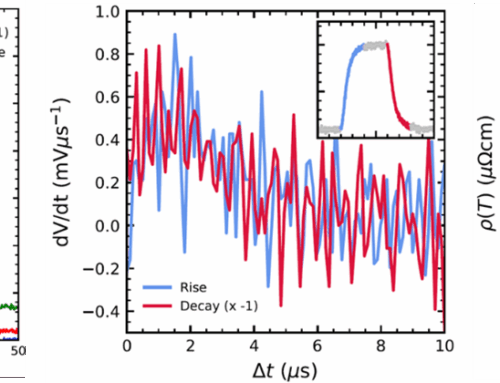Steffen Wiedmann, HFML Nijmegen.
In 2017 and 2018, two PhD students from Brazil came to Nijmegen to do a part of their post-graduate program at the EMFL facility in Nijmegen. They obtained a one-year PhD fellowship from the Federal Agency for Support and Evaluation of Graduate Education (CAPES). Thanks to a collaboration between researchers from Brazil and Steffen Wiedmann from the HFML, they had the opportunity to perform experiments in high magnetic fields and explore new territory as part
of their PhD research.
Anderson Okazaki from the Brazilian Institute for Space Research (São José dos Campos) started his measurements in April 2017 on Pb1-xSnxTe epitaxially grown films. Such narrow-gap semiconductors have been widely studied due to their potential application in infrared optical devices and thermoelectric generators. Recently, Pb1-xSnxTe has been identified as a topological crystalline insulator. The main goal of Okazaki was to unravel their fundamental properties by means of magneto-transport experiments. In one of his high-field experiments, he performed a magnetic-quantum-oscillation study on SnTe (Figure, panel (a)) to probe the topology of the Fermi surface. With angle- and temperature-dependent measurements, he demonstrated that quantum oscillations in SnTe originate from the bulk band structure due to Rashba splitting of the longitudinal valley.
In September 2018, Fernando Pena from the University of Itajubá joined the group. His project was dedicated to investigate the integer quantum Hall effect (QHE) in a series of p-type PbTe/PbEuTe quantum-well structures at low temperatures. He observed the integer QHE (Figure, panel (b)) in quantum wells with different well widths indicating the high quality of the two-dimensional systems under study.
Using the high-field facility in collaboration with staff at the HFML, Okazaki and Pena achieved all their research goals stated in the grant proposals. Currently, they are finishing their PhD programs at their universities and further publications are in preparation. Besides that, they could also expand their experimental skills and knowledge taking a close look at the science done in high magnetic fields.
Steffen Wiedmann: “This was the first time that I organized these internships together with my collaborators from Brazil. Anderson and Fernando did a fantastic job. It was not only scientifically rewarding, they also had a pleasant time here in the Netherlands working together with our team members and learning new skills. I am proud that I could act as supervisor and thank Eduardo Abramof, Marcelos Peres, Sergio Pezzini, and Paulo Rappl for this great collaboration.”

Figure: (a) Second derivative of the longitudinal resistance Rxx as a function of 1/B measured on SnTe epitaxial films at 4.2 K and up to 30 T.
(b) Quantum Hall effect in a PbTe/PbEuTe quantum well at 0.35 K and up to 33 T: Hall resistance Rxy (blue dashed line) and longitudinal resistance
Rxx (red line).
Shubnikov–de Haas oscillations in topological crystalline insulator SnTe(111) epitaxial films, A. K. Okazaki, S. Wiedmann, S. Pezzini, M.L. Peres,
P. H. O. Rappl, and E. Abramof, Phys. Rev. B 98, 195136 (2018).
https://journals.aps.org/prb/abstract/10.1103/PhysRevB.98.195136
Contact: steffen.wiedmann@ru.nl






